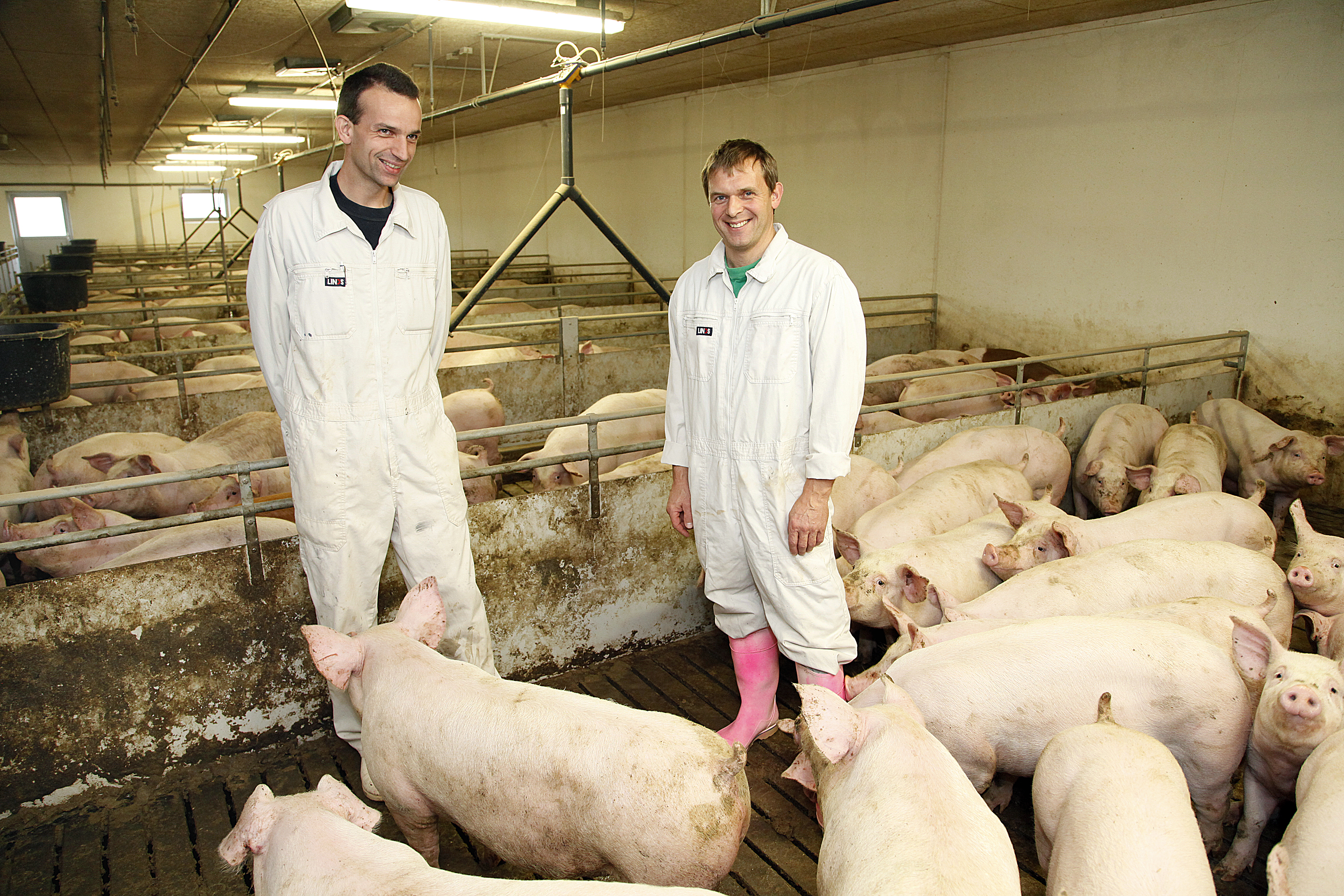



Innovation to Buck the Trend in Danish Slaughter Pig Sector
While the Danish pig industry is seeing the slaughter herd diminish with more and more weaners being sent for export, one pig farmer is bucking the trend and looking for new and innovative ways of developing the finisher side of his business, writes Chris Harris for ThePigSite.Asger Krogsgaard has a growing family farming business near Ringkøbing in Jutland with 17,000 sows producing 55,000 piglets a year and taking 33,000 on to finishing and slaughter.
The remaining 22,000 he sells as 30kg piglets to neighbours.

He also farms 625 hectares of agricultural land he owns together with another 200 hectares of land on neighbouring farms.
In all he has eight production sites – two breeding sites with the sows, one for gilts and weaners, one for piglets and the other four for slaughter pigs – with a workforce of 18.
He said that 10 years ago his strategy was only to produce piglets, but he then decided to have a fully integrated production system growing the pigs on to slaughter to help offset potential volatility in prices at any one time in one particular part of the market.
Mr Krogsgaard, who is also on the board of the leading Danish processor, Danish Crown, built his main slaughter pig unit in Ringkøbing to take 4,000 slaughter pigs with a production of 16,000 a year on a production cycle of four times a year.
He received permission to build the farm in 2008, but because of the financial crisis the build was delayed until 2012.
“It was a large investment to have this production, and the efficiency is to have full line production,” said Mr Krogsgaard.
His business produces solely for the Danish slaughter sector, as producing for markets such as UK exports would involve further investment in loose housing systems in the breeding units and this would cut the breeding potential.
He takes the finishing pigs up to a slaughter weight of around 110kg with a deadweight of 85kg and it is how he manages the feed regimes and the daily weight gain that helps to create the efficiency on the farm.
Mr Krogsgaard has introduced a new programme into the feeding regime, Gainmax. This system, developed by the company DLG, is designed to help farmers maximise their feed conversion, bringing down the number of feed units needed to achieve optimum weight gain.

The programme takes into account not only the feed mix, but all points that might affect the way the pig will put on weight – stress, health, and environment.
It is designed to bring the best bottom line with the best possible lean meat percentage and help speed up growth so that more pigs can pass through the finishing procedure each year.
The farms work on an “all-in-all-out” system and production costs are around 10.10DKK per kg, while the present Danish price is 9.4DKK per kg. However, Danish Crown also gives its producers an annual bonus of around 10 per cent.
The programme looks at the feed compound which is made up on the Ringkøbing farm and then distributed to the other finishing units.
Four years ago Mr Krogsgaard decided to change his approach to feed, when he decided to start growing maize instead of solely grains such as wheat and barley.
He said that he was facing problems growing the wheat and barley because the farm is on poor soil and he has to irrigate four to six time in a growing season to get a good crop.
The switch is seeing him now produce 8,500kg of maize a year compared to 3,500 kg of wheat or barley. He produces the crops on a cycle of two years of maize, one year of barley, one year of oil seed rape and one year of wheat before returning to maize again.
His current production produces enough maize to last for most of the year before he has to buy in feed.
The feed mix includes bread bought from a local bakery and the wet feed is mixed with bought in soy and minerals with water on the farm in a well found while digging the pits for the feed silos.
The Gainmax programme to achieve the optimum feed conversion also relies on weighing two groups of 20 monitor pigs each week.
The system has seen Mr Krogsgaard’s production average between 2.55 and 2.78 deed units a day while achieving around 1000 grams weight gain. The higher feed use usually occurs when the maize is switched to traditional grains.
The feed usage compared with a national average for Denmark or around 2.7 to three feed units a day. He is also achieving a low mortality rate and a good carcase weight at slaughter.
.jpg)
His only concern is a lean meat ratio that is lower than he would like and this can be adjusted by looking at the pig genetics or the feed mix.
The whole farm has cost Mr Krogsgaard about 23 million DKK to establish, largely because of the feed operation he has built, but he is looking to expand and potentially double production on the site.
At present, however, he has other issues in mind as he has joined forced with some neighbours to establish five wind turbines on their farms, each producing 10 million Kw of power being fed into the grid - enough to power 10,000 homes and also earn a valuable income.
October 2015








